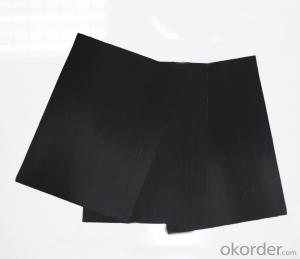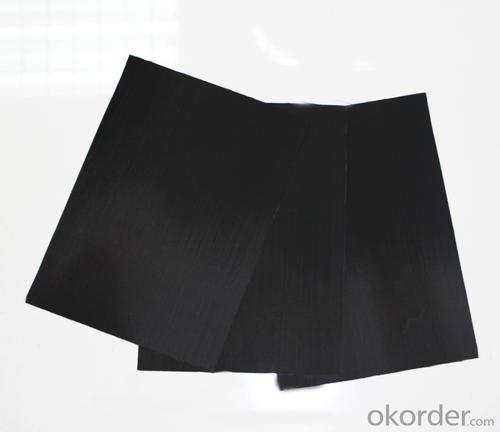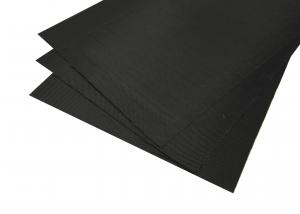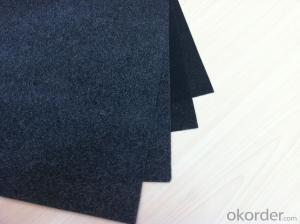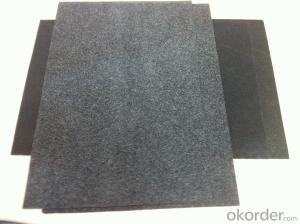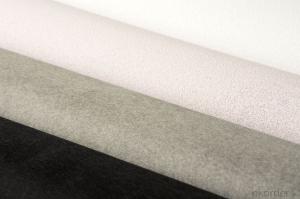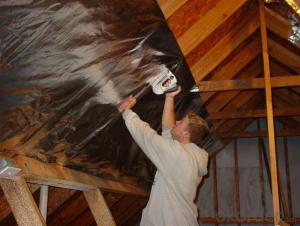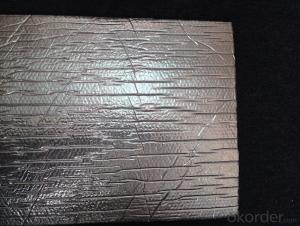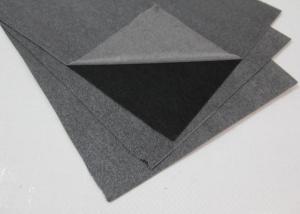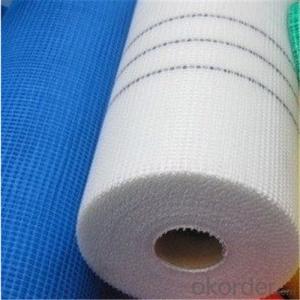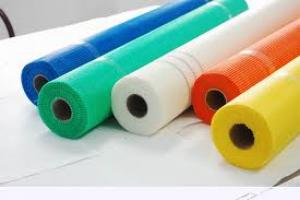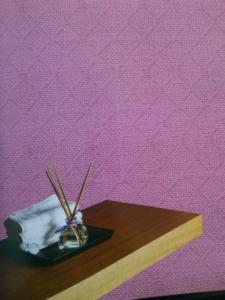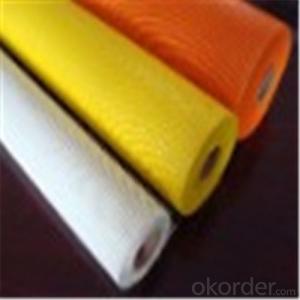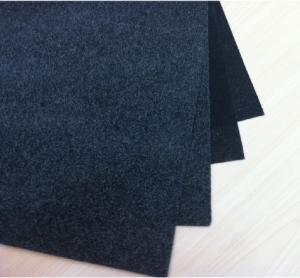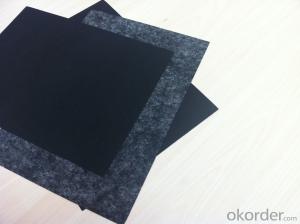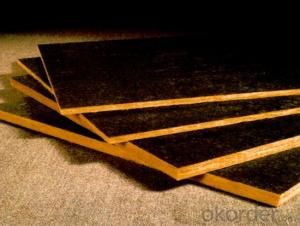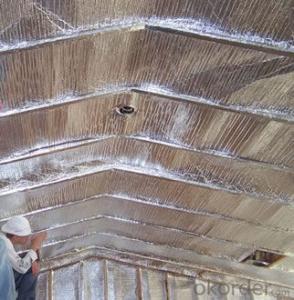Fiberglass Facing Black Fiberglass Cloth-140gsm with Reinforcement
- Loading Port:
- Shanghai
- Payment Terms:
- TT OR LC
- Min Order Qty:
- 500 m²
- Supply Capability:
- 100000 m²/month
OKorder Service Pledge
OKorder Financial Service
You Might Also Like
Introduction of Fiberglass Tissue
Fiberglass Tissue is a kind of facing, which is made of by the white fiberglass tissue, and special production process.
Application of Fiberglass Tissue
Our black tissue are mainly used as facing for glass wool insulation, rockwool, mineral wool etc. Also fiberglass tissue facing is used under roof decking, under attic rafters, over existing attic thermal insulation, in floors, walls and crawl spaces, and in industrial and commercial buildings to block radiant heat coming into house through the roof during the summer and retain indoor heat generated during in winter
Advantage of Fiberglass Tissue
Light weight
• High manufacturing accuracy
• High strength
• Small inertia resistance
• Strong heat dissipation ability
• Good visual effect
• High reflective insulation
• Heat resistant, water proof, stable at high temperature;
• Environmentally friendly, no smell and not-toxic;
• Smooth and clear surface;
Packing of Fiberglass Tissue
1. Waterproof paper then PVC shrinking Film
2. Water-Proof film only
3. Woven cloth
4. Kraft paper or Water Proof Film then Metal/wooden pallet
5. (Also as your request. )
Specification of Fiberglass Tissue
Specification | ||
ITEM | UNIT | VALUE |
Weight | g/m2 | 140 |
Thickness | mm | 0.16 |
Density | /cm | 12×12 |
Oxygen Index Number | % | ≥32 |
Tensile Strength MD | n/125px | 800 |
Tensile Strength CMD | n/125px | 500 |
Fire Resistant Property | B1 | |
Pictures of Fiberglass Tissue
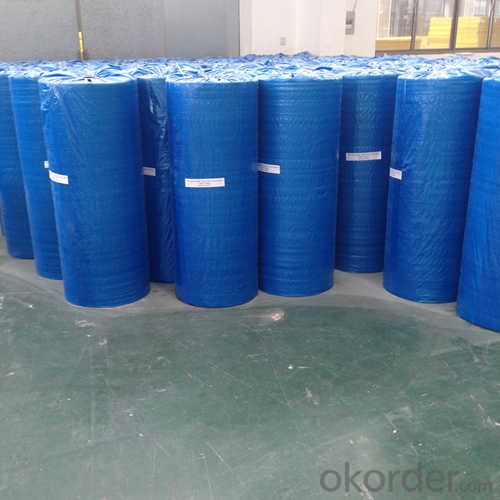
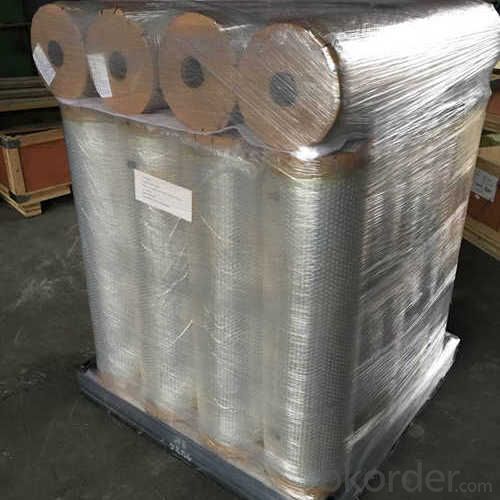
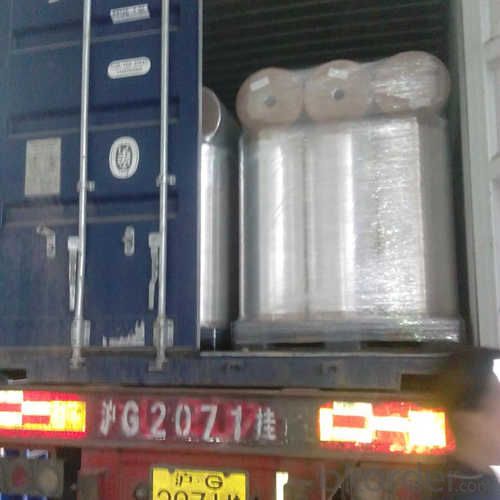
FAQ
We have organized several common questions for our clients,may help you sincerely:
1. What is the storage condition?
The Aluminum Foil Facing should be stored at room temperature and kept from wet and heat source.
2. How to guarantee the quality of the products?
We have established the international advanced quality management system,every link from raw material to final product we have strict quality test;We resolutely put an end to unqualified products flowing into the market. At the same time, we will provide necessary follow-up service assurance.
3.How to guarantee the quality of the products?
We have established the international advanced quality management system,every link from raw material to final product we have strict quality test;We resolutely put an end to unqualified products flowing into the market. At the same time, we will provide necessary follow-up service assurance.
4.How long can we receive the product after purchase?
In the purchase of product within three working days, We will arrange the factory delivery as soon as possible. The specific time of receiving is related to the state and position of customers. Commonly 20 to 25 working days can be served.
5.What is the storage condition?
The welded wire mesh should be stored at room temperature and kept from wet and heat source.
- Q: Is it possible to utilize recycled black fiberglass tissue for a future project?
- <p>Yes, you can use recycled black fiberglass tissue in your next project, provided it meets the quality and safety standards required for your specific application. Recycled fiberglass can be a sustainable and cost-effective alternative to new materials. Ensure that the recycled material has been properly processed to remove any contaminants and is free from degradation that could compromise its structural integrity. Always check with the supplier or manufacturer for any specific guidelines or certifications regarding the use of recycled materials in your project to ensure compliance with industry standards and safety regulations.</p>
- Q: Does fiberglass facing require regular maintenance?
- Regular maintenance is not required for fiberglass facing. Fiberglass is a resilient material that can resist various environmental elements, such as moisture, UV rays, and pests. Unlike other materials, it doesn't corrode, rot, or decay, eliminating the need for frequent painting or sealing. Nevertheless, it's crucial to keep the fiberglass facing clean and clear of dirt and debris to preserve its appearance and performance. To maintain its good condition, regular cleaning with mild detergent and water should suffice. Additionally, prompt repair of any damage or cracks in the fiberglass facing is necessary to prevent further complications. In conclusion, fiberglass facing is a low-maintenance choice that can endure for many years with minimal upkeep.
- Q: What kind of black fiberglass tissue is recommended for use in cold weather conditions?
- <p>Yes, there is a specific type of black fiberglass tissue designed for use in cold climates. This type of fiberglass is often referred to as 'weather-resistant' or 'cold-resistant fiberglass.' It is engineered to maintain its strength and flexibility in low temperatures, preventing brittleness and breakage. This special formulation is crucial for applications where the material will be exposed to freezing temperatures and harsh weather conditions, ensuring durability and longevity.</p>
- Q: Is it possible to utilize black fiberglass tissue in a garden or yard setting?
- <p>Yes, you can use black fiberglass tissue in your garden or yard. It is often used as a weed barrier to prevent weed growth and retain moisture in the soil. However, it's important to ensure proper installation and management. The black color can absorb heat, which might affect the soil temperature, so it's best to cover it with a layer of mulch or soil to moderate this effect. Additionally, it's crucial to check for any potential environmental impacts and ensure that it does not harm the local ecosystem or plants.</p>
- Q: This question asks for the rate at which black fiberglass tissue absorbs water.
- <p>The water absorption rate of black fiberglass tissue is typically very low, as fiberglass is a material known for its resistance to water and moisture. It is designed to repel water and not absorb it, making it an excellent choice for applications where water resistance is important. The exact rate can vary depending on the specific manufacturing process and the presence of any treatments or coatings applied to the fiberglass. However, in general, fiberglass is considered to have a negligible water absorption rate, often less than 1%.</p>
- Q: What is the variance in cost between black and white fiberglass paper?
- <p>The price difference between black and white fiberglass paper can vary significantly based on factors such as quality, thickness, and market demand. Generally, black fiberglass paper may be slightly more expensive due to the additional dyeing process. However, the exact price difference is not fixed and can fluctuate. It's best to check with specific manufacturers or suppliers for current pricing as it can change over time and differs by region.</p>
- Q: The user is asking if black fiberglass tape can be used to create a window screen or blind.
- <p>Yes, you can use black fiberglass tape to make a window screen or blind. Fiberglass tape is strong, durable, and resistant to weather and UV rays, making it suitable for outdoor use. To create a window screen, you can use the tape to secure a mesh material to a frame. For a blind, you might weave the tape in a pattern to create slats. However, ensure the tape is of high quality and the mesh is appropriately sized for the window. Always follow safety precautions when working with tools and materials.</p>
- Q: This question asks for a comparison between black fiberglass tissue and other sound insulation materials, focusing on their properties and effectiveness.
- <p>Black fiberglass tissue is a type of sound insulation material known for its lightweight, flexibility, and high sound absorption capabilities. Compared to other materials, it offers excellent thermal insulation and resistance to moisture and fire. However, it may not be as dense or heavy-duty as some alternatives like mass-loaded vinyl or certain types of acoustic foam, which can provide better soundproofing in high-noise environments. Black fiberglass tissue is also sensitive to physical damage, which can reduce its effectiveness over time. It's important to consider the specific application and environmental factors when choosing the right sound insulation material.</p>
- Q: Is it possible to reuse old paper towels in the kitchen instead of purchasing new ones for each cooking session?
- <p>While reusing paper towels might seem like an environmentally friendly option, it's generally not recommended for kitchen use. Paper towels are designed for single use and can harbor bacteria after contact with food particles and spills. Reusing them can lead to cross-contamination and foodborne illnesses. Instead, consider using washable rags or cloths that can be sanitized after each use, or opt for more sustainable alternatives like bamboo or reusable silicone towels.</p>
- Q: Is it safe to use black fiberglass tissue for food packaging purposes?
- <p>Black fiberglass tissue is not suitable for food packaging. Food packaging materials must be non-toxic and safe for contact with food. Fiberglass, regardless of color, is a type of glass fiber reinforced plastic that can be harmful if ingested or inhaled. It's important to use materials specifically designed for food contact, such as food-grade plastics, paper, or certain types of metal, which are tested and approved for safety in food packaging.</p>
Send your message to us
Fiberglass Facing Black Fiberglass Cloth-140gsm with Reinforcement
- Loading Port:
- Shanghai
- Payment Terms:
- TT OR LC
- Min Order Qty:
- 500 m²
- Supply Capability:
- 100000 m²/month
OKorder Service Pledge
OKorder Financial Service
Similar products
Hot products
Hot Searches
Related keywords
